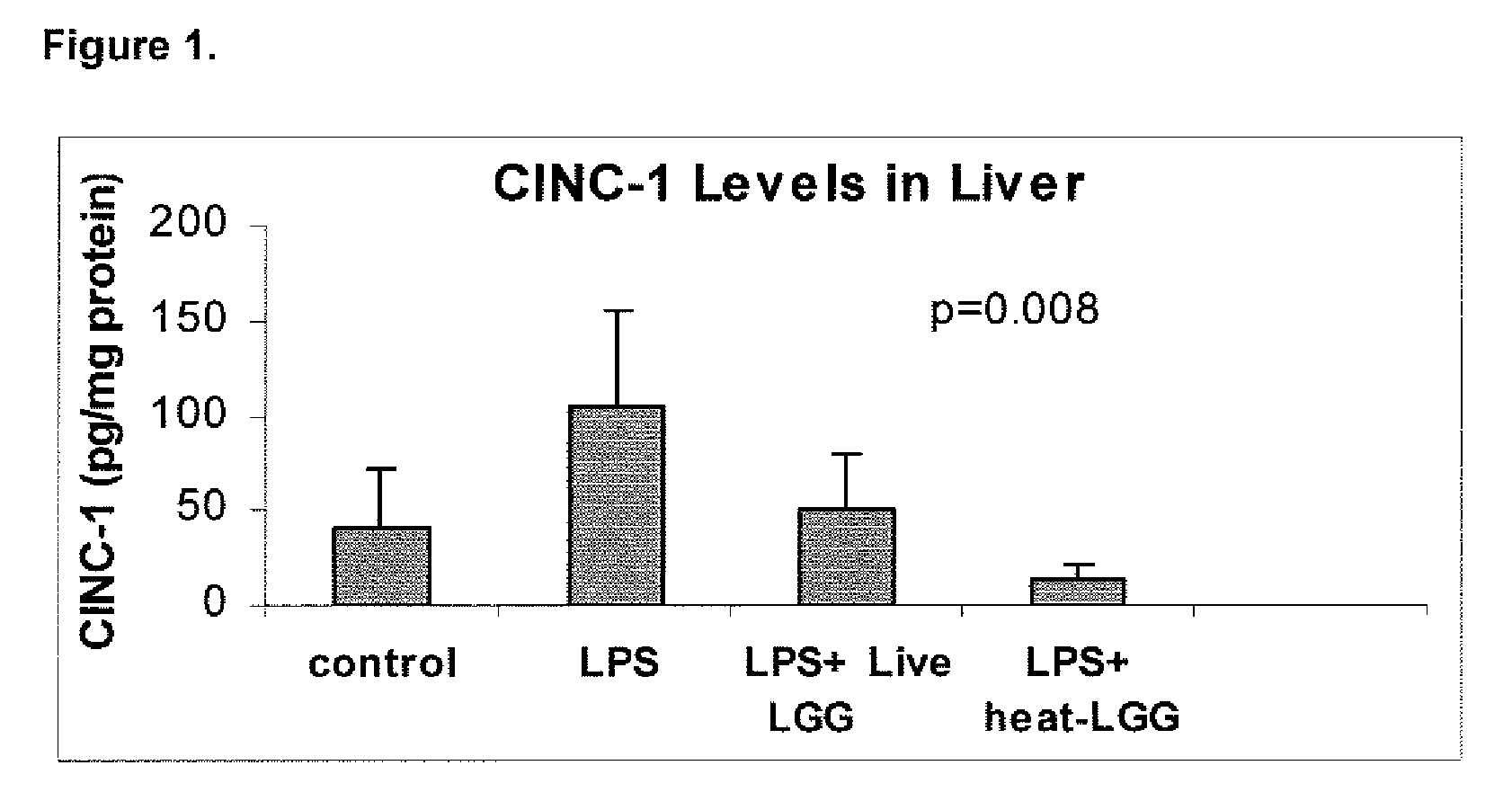Method for reducing or preventing systemic inflammation
a systemic inflammation and inflammatory response technology, applied in the field of systemic inflammation treatment or prevention, can solve the problems of insufficient inflammatory response, damage to its own tissue, undesirable physiological response of the immune system, etc., and achieve the effects of reducing or preventing systemic inflammation, reducing inflammation, and reducing or preventing the release of various pro-inflammatory cytokines
- Summary
- Abstract
- Description
- Claims
- Application Information
AI Technical Summary
Benefits of technology
Problems solved by technology
Method used
Image
Examples
example 1
[0089]This example illustrates the effect of inactivated LGG on systemic inflammation in formula-fed neonatal rat pups.
Materials & Methods
[0090]In two separate experiments, Sprague-Dawley (Taconic, Germantown, N.Y.) infant rats were randomly assigned to four gastrostomy feeding groups with five rats per group: a control group (no LPS or LGG), an LPS group, an LPS plus live LGG group, and an LPS plus inactivated LGG group. Mother-reared rats of the same age were used as reference controls. Gastrostomy feeding, using the rat infant “pup-in-the-cup” model, began on day 7 of life of the rat pups. The gastrostomy feeding tubes were constructed from 24-cm sections of polyethylene tubing that were inserted into the stomach of the pups. The gastrostomy placement was done under isoflurane anesthesia. Timer-controlled syringe pumps were connected to the feeding tubes and were set to feed the rats for the first 20 minutes of every hour at a weight-dependent flow rate.
[0091]During a 2-day accli...
example 2
[0105]This example further illustrates the effect of inactivated LGG on inflammation in formula-fed neonatal rat pups.
[0106]Intestinal epithelial cells were pretreated with live or UV-inactivated LGG at 1×108 cfu / L and then stimulated by Flagellin 500 ng / mL. IL-8 production was measured by ELISA. IκB and ubiquitinated-IκB (UbQ-IκB) expression were measured by Western Blotting and immunoprecipitation. NFκB localization was evaluated by immunofluorescence staining.
[0107]During the experiment, Flagellin induced a significant increase in cellular IL-8 production (p<0.05). Cells pretreated with either live LGG or UV-inactivated LGG and then stimulated by Flagellin showed a significant (p<0.05) change in IL-8, NFκB nuclear translocation, IκB, and UbQ-IκB. The results are shown in Table 1. Arrows pointing upwardly indicate an increase in the parameter, while arrows pointing downwardly indicate a decrease in the parameter.
TABLE 1Expression Changes Due to Live or Inactivated LGGSupplementati...
PUM
| Property | Measurement | Unit |
|---|---|---|
| distance | aaaaa | aaaaa |
| distance | aaaaa | aaaaa |
| concentration | aaaaa | aaaaa |
Abstract
Description
Claims
Application Information
 Login to View More
Login to View More - R&D
- Intellectual Property
- Life Sciences
- Materials
- Tech Scout
- Unparalleled Data Quality
- Higher Quality Content
- 60% Fewer Hallucinations
Browse by: Latest US Patents, China's latest patents, Technical Efficacy Thesaurus, Application Domain, Technology Topic, Popular Technical Reports.
© 2025 PatSnap. All rights reserved.Legal|Privacy policy|Modern Slavery Act Transparency Statement|Sitemap|About US| Contact US: help@patsnap.com



